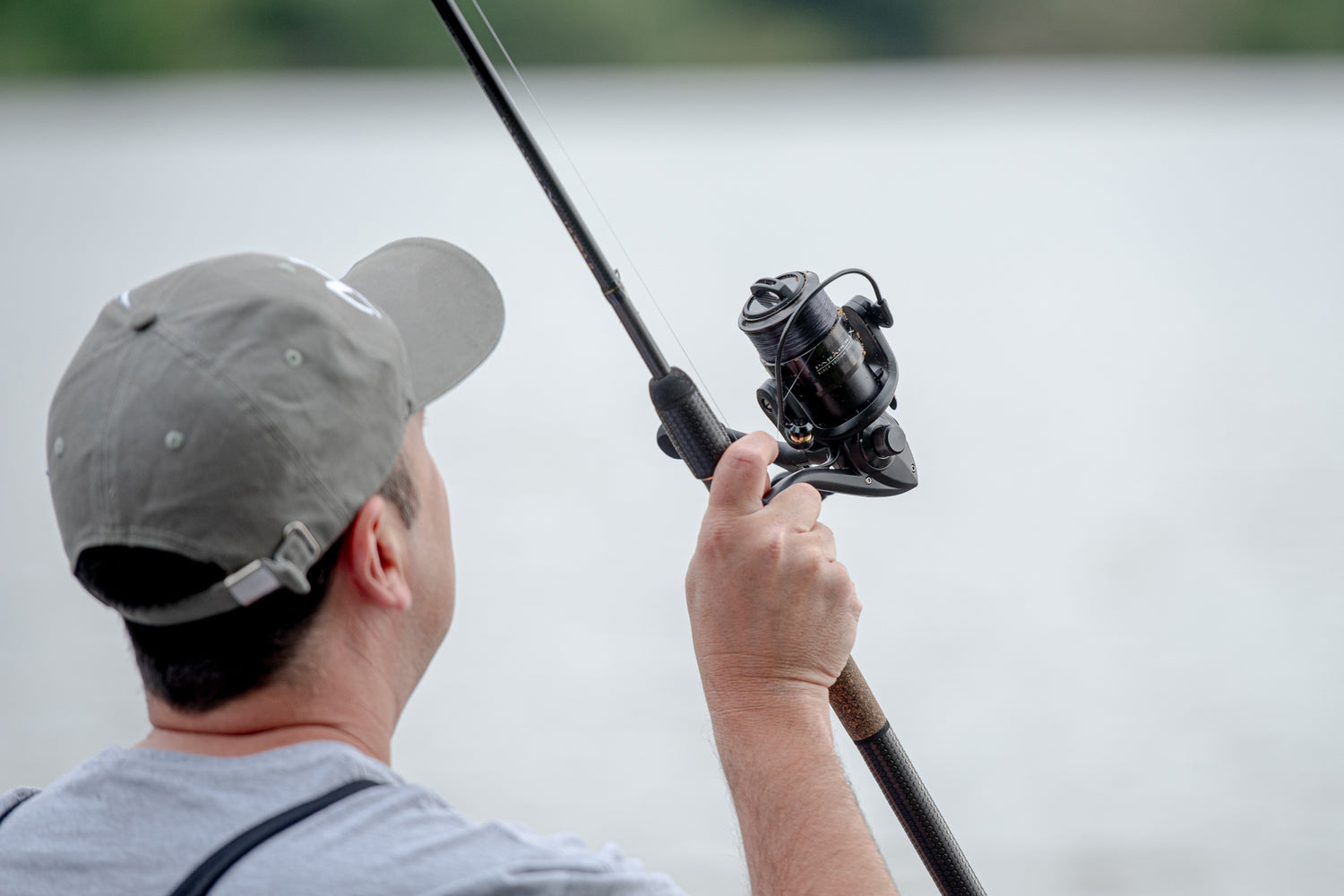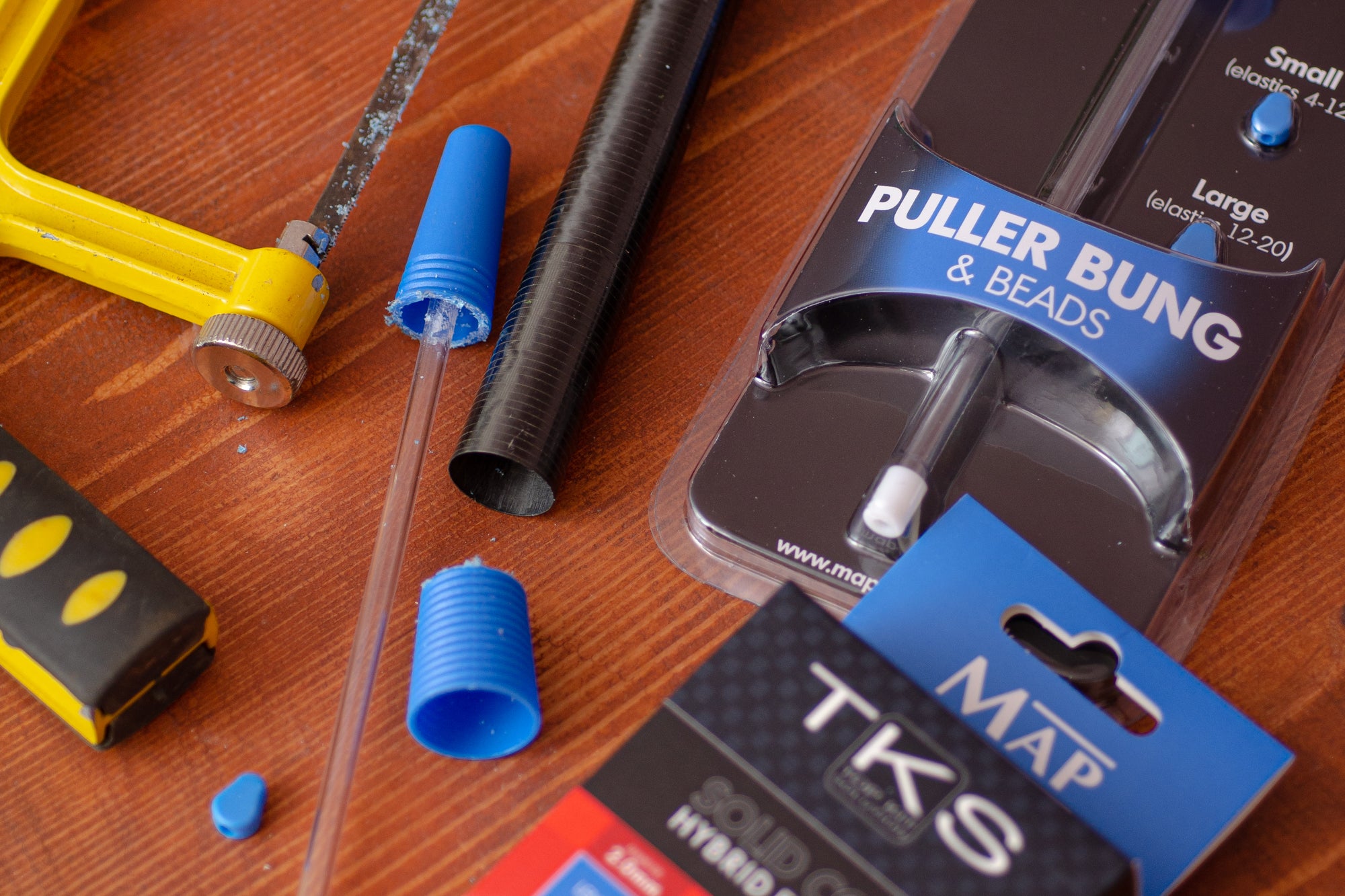
To get the optimum performance from your set up when fishing rod and line tactics one thing that often hampers getting the most from your fishing is that your reel isn’t loaded correctly.
An incorrectly-loaded reel can have several of negative impacts; the first is that distance can be compromised. This happens when there isn’t enough line on the spool, the lip of the spool itself can restrict the flow of the line leaving the spool on the cast, which will ultimately slow everything down and reduces the maximum distance you can achieve.
This is really important to avoid when feeder fishing, where you are often fishing at distance and need things to be as efficient as possible. The flow of the line can impede the acuracy and the distance the feeder or bomb will reach.
When you’re float fishing there's also an impact, particularly when you’re float fishing on rivers and allowing the float to travel downstream as naturally as possible, using the flow of the water to pull the float and therefore pull line off the spool at a natural rate. If the reel isn’t loaded to the lip of the spool, this will cause a slight snag which will disrupt your presentation and result in fewer bites.
Backing & Spool Capacity
The first thing to consider when loading a reel is the amount of line the spool can accommodate. This is easily worked out by reading the details on the spool and applying that to the line diameter and meterage details on the packaging of our MAP Optimum main line - this will give you a clear idea of how much line it will take to fill the spool.
If you’re using thin main lines, it is sometimes necessary to part-fill the spool with some backing line because thin line has a tendency to 'bed in' when there are too many laters of line, which means the coils interweave and this will inhibit how the line peels off the spool on the cast. With thicker lines this is less of a problem because it will fill a spool much easily (because the line is physically thicker) but still be mindful of using a spool that's too deep.

To part-fill the spool you can simply just take off enough of the existing line that's on it so you can top it up with new line. If it's a new reel then you can back the spool up with some thick line (e.g. 0.30mm carp line) or use fly backing, which can be more cost effective.
MAP Optimum is supplied in 300m spools; in most cases 300 metres of fresh line isn’t needed. So, 100-150m is ample for 95% of general fishing situations.
A great tip if you’ve already got line on a spool that you want to put fresh main line onto is to put two distance sticks in the ground and count 150m of line around the sticks and cut it off at that point, this way you know that you’ve got exactly 150m left on your new spool of line for the next time it requires renewing.
Loading The Spool
Once you’ve applied your backing, counted 100 to 150m of line around your distance sticks and removed it from the reel, or have chosen to simply loading straight from the line spool, it’s time to get the reel loaded with fresh line. The first stage of this is to put the reel onto the butt section of a rod, thread your backing or existing line on the reel through the first (butt) eye on the rod and tie it to your new spool of line using an Albright knot; there are lots of diagrams and videos online about how to tie this simple knot.
The first stage of this is to put the reel onto the butt section of a rod, thread your backing or existing line on the reel through the first (butt) eye on the rod and tie it to your new spool of line using an Albright knot; there are lots of diagrams and videos online about how to tie this simple knot.
The most important thing is the knot should be small and unobtrusive to the line on the reel when loaded, otherwise it can cause line spooled over it to snag on the cast. If you are loading line directly onto an empty spool, the best way of doing this is to attach the line to the spool using an Arbor Knot.
If you are loading line directly onto an empty spool, the best way of doing this is to attach the line to the spool using an Arbor Knot.  The next step is super simple, just put the spool of reel line into a bucket of water and with your spare hand hold the line under tension as you wind it onto the spool, by doing this you’re achieving the best line lay possible.
The next step is super simple, just put the spool of reel line into a bucket of water and with your spare hand hold the line under tension as you wind it onto the spool, by doing this you’re achieving the best line lay possible.  As the spool fills, don’t over fill the spool allow a millimetre or two below the lip of the spool to ensure that excess line doesn’t pour off the reel on the cast causing tangles.
As the spool fills, don’t over fill the spool allow a millimetre or two below the lip of the spool to ensure that excess line doesn’t pour off the reel on the cast causing tangles.  Once you’ve got the right amount on the spool, pop the line into the line clip on the reel and cut the line and you’re done!
Once you’ve got the right amount on the spool, pop the line into the line clip on the reel and cut the line and you’re done!
If you’re using braid, the guide is essentially the same, although you’ll probably need more backing due to the diameter of braid being much thinner than monofilament lines.
It’s also worth bearing in mind that with braid, underfilling the spool slightly more than you would with mono can be a massive help in avoiding tangles. 



